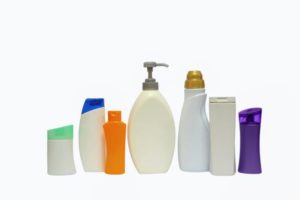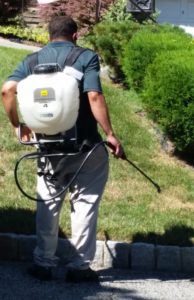 People worry about breast cancer and whether exposure to chemicals "in the environment" can lead to breast cancer. According to many studies the answer is: YES, absolutely - and this is why they are called carcinogens (a substance capable of causing cancer). What are the chemicals?
People worry about breast cancer and whether exposure to chemicals "in the environment" can lead to breast cancer. According to many studies the answer is: YES, absolutely - and this is why they are called carcinogens (a substance capable of causing cancer). What are the chemicals?
A recent study found that 921 chemicals are likely "breast carcinogens" and thus increase the risk of breast cancer. Many of these are commonly used in everyday products, including personal care products. The authors also pointed out that this list of chemicals is incomplete because information is not publicly available on many additional chemicals . (Unfortunately, the EPA is not asking for more information and testing to be done on many chemicals.)
The authors of the study point out that breast cancer is "both the most commonly diagnosed cancer type and leading cause of cancer death among women worldwide". So knowing which chemicals could potentially cause breast cancer is important. Some examples: phthalates, parabens, many pesticides, endocrine disruptors.
Bottom line: Read ingredient lists in order to avoid many problematic chemicals. For example; if you see parabens or phthalates listed (e.g., in lotion) - avoid those products. Avoid fragrances, stain repellents, antimicrobials. Eat as many organic foods as possible (to avoid pesticide residues in non-organic foods). [See more tips on avoiding toxic chemicals.]
 Also, avoid using pesticides as much as possible, and instead use least toxic Integrated Pest Management (IPM) or organic methods, both inside the home and outside.
Also, avoid using pesticides as much as possible, and instead use least toxic Integrated Pest Management (IPM) or organic methods, both inside the home and outside.
Excerpts from Environmental Health News:
More than 900 chemicals commonly found in consumer products and the environment have been linked to breast cancer risk in a new study.
The study, published today in Environmental Health Perspectives, identified 921 chemicals that could potentially increase the risk of breast cancer and found that 90% are ubiquitous in consumer products, food and drinks, pesticides, medications and workplaces.
The list includes chemicals like parabens and phthalates, which are commonly found in makeup, skin and hair care products; and numerous pesticide ingredients, including malathion, atrazine and triclopyr, which are used on food and in household pest control products in the U.S.
Breast cancer among young women has increased in recent years. Between 2010 and 2019, diagnoses among people 30 to 39 years old increased 19.4%, and among those ages 20 to 29, rates increased 5.3%. This change is too fast to be explained by genetics, so researchers have begun looking more closely at potential environmental causes for the disease.
A 2020 study found that women who used chemical hair straighteners more than six times a year had about a 30% higher risk of breast cancer than those who didn’t use chemical straighteners. Those products typically contain one or more of the chemicals identified in the new study as increasing the chances of getting breast cancer.
To conduct the new study, researchers at Silent Spring Institute, a nonprofit breast cancer prevention research group, developed a new method to quickly identify compounds that can increase the likelihood of the disease.
Historically, regulators have used animal studies to determine whether chemicals cause mammary tumors in mice to assess whether they could increase breast cancer risk in humans, but these studies are slow and expensive. In 2016, the International Agency for Research on Cancer (IARC) published a landmark study outlining 10 ways that carcinogens cause cancer to develop. Since then, scientists and regulators have begun working to identify chemicals that have those characteristics as a quicker, less expensive way to determine whether exposure to them is likely to increase cancer risk.
Kay and her team looked specifically for chemicals that activate estrogen receptors in breast cells and for chemicals that cause cells to make more estrogen or progesterone, both known risk factors for breast cancer. More than half of the chemicals on their list cause cells to make more estrogen or progesterone and about a third activate the estrogen receptor. An additional 278 of the chemicals on the list have previously been found to cause mammary tumors in animal studies.
Kay noted that while there are tens of thousands of chemicals used in commercial products in the U.S., they only had access to data on whether chemicals interact with hormones from the U.S. Environmental Protection Agency (EPA) for about 2,200 chemicals.
Children's exposure and future breast cancer risks
Evidence also suggests that children’s exposure to these chemicals during key developmental windows can increase their risk of developing breast cancer later in life, and that these types of exposures can even increase the odds of negative outcomes for multiple generations of women.
Many of the chemicals listed in the new study are common in products made for children. For example, many kids’ lotions and shampoos include parabens and phthalates and the pesticide malathion is commonly used as an ingredient in lice treatments for children.
